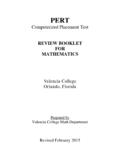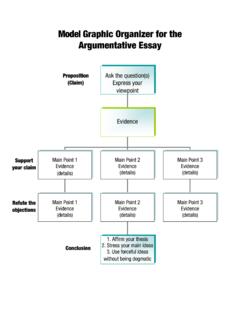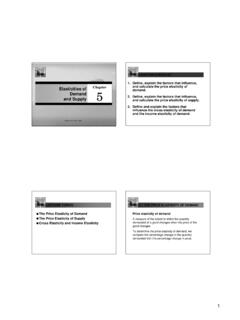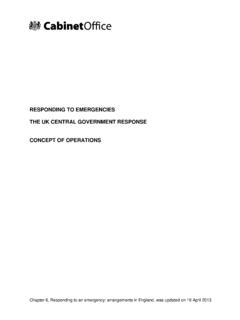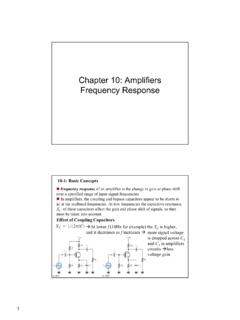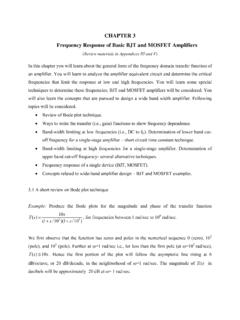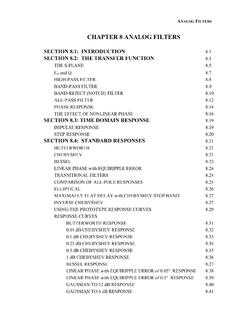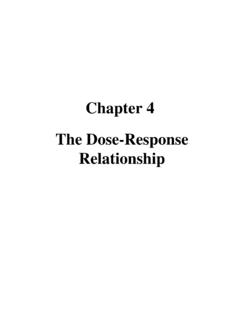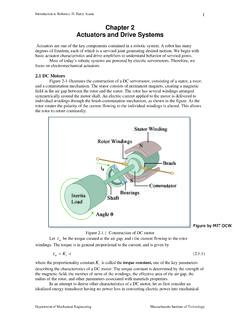Transcription of Chapter 7 Written Tests: Constructed-Response and …
1 Chapter 7 Written tests : Constructed-Response and Selected- response Formats Steven M. Downing Contact Information: Steven M. Downing, PhD Associate Professor University of Illinois at Chicago College of Medicine. Department of Medical Education (MC 591) 808 South Wood Street, Office 986-C Chicago, Illinois 60612-7309 Phone: Fax: E-mail: Acknowledgments The author is most grateful to Thomas M. Haladyna, PhD for his review of and constructive criticisms and suggestions for this Chapter . ** Downing, & Yudkowsky, R. (Eds.) Assessment in Health Professions Education (In Press).
2 LEA. Please do not cite or quote this Chapter without the explicit Written permission of the authors. Introduction The purpose of this Chapter is to provide an overview of the two Written testing formats most commonly utilized in health professions education: the Constructed-Response (CR) and the selected- response (SR) item formats. This Chapter highlights some key concepts related to the development and application of these testing modalities and some of the important research evidence concerning their use. This Chapter is not intended to be a complete item writing guide or a comprehensive and in-depth critical review of the current theoretical and research literature on Written testing or a scholarly defense of Written testing in either modality.
3 Rather, the objective of this Chapter is to provide a practical summary of information about developing and effectively using CR and SR methods to test cognitive achievement in health professions education, with some suggestions for appropriate use. CR and SR Formats The generic terms Constructed-Response (CR) and selected- response (SR) are accurately descriptive of how these two testing formats work. CR items require the examinee to produce a Written response to a stimulus, usually a question or a statement. In this Chapter , CR items are discussed as direct or implied open-ended questions or other types of stimuli that require examinees to write (or type) responses or answers, which are then read and scored by content-expert human judges or raters.
4 Essay tests are the most common application of the CR item form in health professions education. Such a narrow definition of CR tests limited to essay questions alone would be disputed by many educational measurement professionals who view CR testing as a type of performance 2testing ( , Haladyna, 2004). SR items require examinees to choose a correct or best answer from a fixed listing of possible answers to a question or other stimuli. Examinee answers to SR items may be computer-scored, using answer keys (listing of correct or best answers) developed by content experts. Multiple-choice items (MCQs) are a common example of the SR item form.
5 Table summarizes some characteristics of each format discussed in this Chapter . INSERT TABLE ABOUT HERE The prototypic CR item type is the essay question. For this Chapter two general types of essays are discussed those requiring long answers and those requiring short answers. A long-answer essay may require the examinee to write 1-2 or more pages in response to the question, while short-answer essay questions may require a 1-2 paragraph Written response . The multiple-choice item (MCQ) is the prototypic SR item type. All other examples of fixed-answer test item formats may be considered a variant of the multiple-choice item type.
6 MCQ variants include: the true-false, alternate-choice, multiple-true-false, complex MCQ, matching, and extended matching item types. Table lists some examples. INSERT TABLE ABOUT HERE Assessment Using Written tests What are Written tests good for? Written tests are useful in the measurement of cognitive knowledge or to test learning, achievement, and abilities. Referring to Miller s Pyramid, the knows and knows how level at the base of the pyramid are best measured by Written tests . And, the ACGME toolbox suggests the use of Written tests 3for measuring cognitive knowledge (Downing & Yudkowsky, Chapter 1, this volume).
7 Most cognitive knowledge is mediated verbally, such that humans acquire cognitive knowledge through Written or spoken words or by visual, auditory or other stimuli that may be translated or mediated verbally. Thus, Written tests are ideally suited to test verbal knowledge. (The nature of cognitive knowledge and its acquisition is far beyond the scope of this book.) Many educational measurement texts discuss high-inference and low-inference Written item formats, to distinguish the assessment of more abstract verbal knowledge from more concrete verbal knowledge ( , Haladyna, 2004; Linn & Miller, 2005).
8 Written assessments are best suited for the assessment of all the types of learning or cognitive knowledge acquired during courses of study in the health professions through curricula delivered in classrooms, textbooks, lectures, library and internet research, student discussions in small learning groups, problem-solving group activities, on-line teaching/learning environments, and so on. Written tests are most often and most appropriately used to assess knowledge acquisition as formative or summative assessments, to provide feedback on learning or to measure the sufficiency of learning in order to proceed in the curriculum.
9 Written tests are not at all useful to test performance or doing, unless that performance happens to be the production of writing (which can be tested only by Written tests ). The primary guiding factor in determining the appropriateness of any testing format relates to its purpose, the desired interpretations of scores, the construct hypothesized to be measured, and the ultimate consequences of the test. The characteristics of the testing format should match the needs for validity evidence for 4some particular assessment setting and there should be a clear rationale for choice of the Written format, given the validity needs of the assessment.
10 For example, if the goal is to test student cognitive knowledge about the principles of effective patient communication or the understanding of various principles of effective communication with patients, a Written test may match the purpose of the test and the required needs for specific types of validity evidence to support score inferences. But, in order to measure students use of communication skills with patients requires some type of performance test a simulation, a standardized oral exam, or a structured observation of student communication with patients in a real setting.

